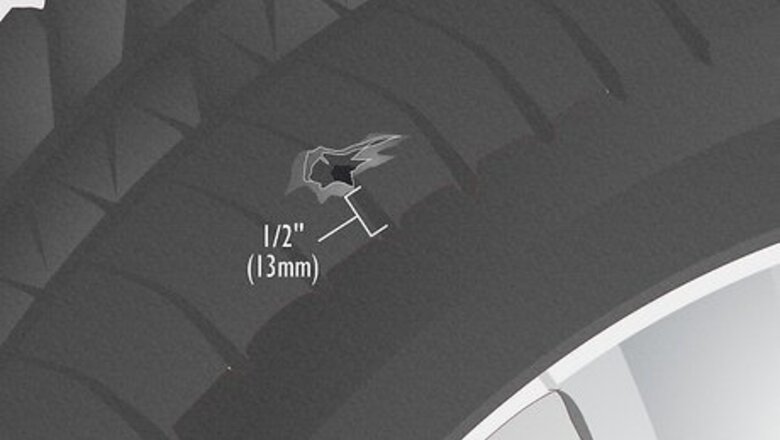
views
- Patch your tires if the puncture is more than 1⁄2 in (1.3 cm) in from the sidewall or shoulder treads.
- Insert a tire plug for a temporary solution without removing the tire. Use a combination patch and plug to permanently repair tires from the inside.
- Replace tires if the sidewalls are damaged, if the puncture is larger than 1⁄4 in (0.64 cm), or if the treads are shorter than 1⁄16 in (1.6 mm).
Safe Patching Distance from Sidewall
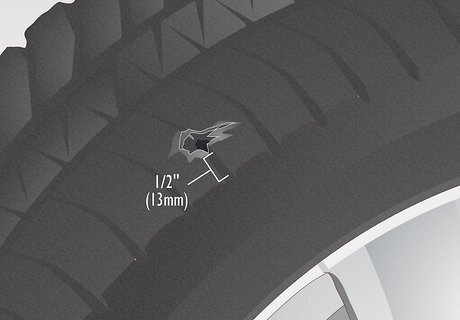
Patch your tire if damage is ⁄2 in (13 mm) from the sidewall. Tires have a steel belt underneath the treads for extra reinforcement, but the sidewall and curved shoulder treads are thinner and weaker. If you find the leak and damage on the center treads, then it’s safe to patch up. If the puncture is less than ⁄2 inch (1.3 cm) from the curve at the edge of the tire, then replace your tire instead. Tires with damage on the shoulders or sidewalls are more likely to blowout and cause you to lose control of your vehicle, even if you try patching the hole.
When is it safe to patch a tire?

When the puncture is smaller than ⁄4 inch (0.64 cm) Measure the width of the puncture with a measuring tape or ruler. If there’s a small puncture, like if you’re fixing a nail in your tire, then it’s a good candidate for patching. If the puncture has a larger diameter, then replace the tire completely. Patches aren’t thick enough to safely seal holes larger than ⁄4 inch (0.64 cm), so they’re more likely to fail.

When the treads are at least ⁄16 in (1.6 mm) deep Place the top of a penny into the treads on your tire to measure them. If the top of Lincoln’s head is visible above the treads, then your treads have worn down and it’s time to replace your tires. If the treads cover up Lincoln’s head, then your tires are still thick enough to patch. When your treads are worn down, your tires are more likely to get damaged and you’ll have a harder time controlling your vehicle. If your tire treads are fine on one side of the tire but worn down unevenly on the other, then it’s best to have your tire replaced.
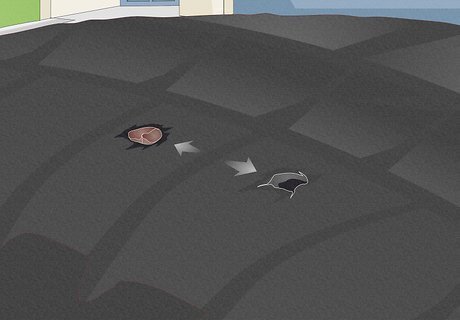
If the damage doesn’t overlap a previous repair Inspect the area around the puncture for signs of old patches or plugs in your tire. If there isn’t any previous damage within 16 inches (41 cm) of the hole you’re trying to plug, then you’re safe to patch your tire and continue driving on it. If you see any old patches or plugs nearby, then replace the tire instead. Placing patches or plugs within 16 inches (41 cm) of one another negatively affects the structural integrity of your tire so it’s more likely to be damaged again.

If the tire doesn’t have other structural damage Look over the tire’s surface for any signs of cracking, bubbling, or separation from the rim. If you notice any tire damage besides the puncture, then replace the tire to ensure that it lasts. If the puncture is the only damage, then it’s okay to just patch the hole instead.
Patching a Tire
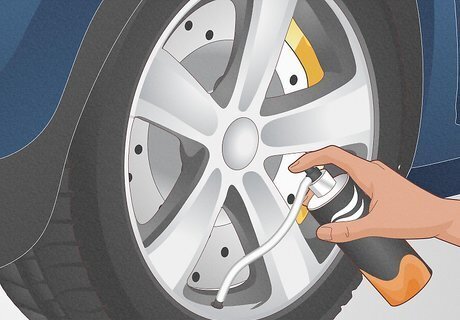
Try a tire sealant spray for a temporary fix. Read the directions on the sealant you bought since the directions may vary slightly. Pull out the object that punctured your tire, and connect the tube on the can of sealant to the air valve on your tire. Press the button on the can to apply sealant inside your tire. Slowly drive your vehicle back and forth to spread the sealant throughout your tire and fill the hole. Most sealants recommend patching your tire within 3 days or after you drive 100 miles (160 km).

Insert a tire plug to quickly patch your tire without removing it. Pull the object that punctured your tire out with a pair of pliers. Stick the smooth pointed awl from the tire plug kit into the hole and spin it around to smooth out the hole. Slide a plug piece through the hole on the insertion tool. Remove the awl and poke the insertion tool with the plug into the hole. Pull the insertion tool straight out and use a pair of scissors to trim the excess plug from your tire. Tire plugs may eventually leak or come loose after driving on them for a long time. Keep in mind that whatever punctured your tire must be within the tire’s tread width for a tire plug to work. If it punctures outside of the tread width, like along the sidewall, it’s irreparable.

Install a patch and plug inside your tire for a permanent solution. To start patching your tire, take out the object that punctured the treads and unmount the old tire from the rim. Buff and clean the inside and outside of the tire so the surface is smooth. Spread the adhesive that came with the patch on the inside and outside of the tire. Push the plug through the treads from the inside of the tire and press the patch down firmly. Once the patch dries, install it back on the rim to put back on your vehicle. If you don’t feel comfortable taking the tires completely off the wheel, then take your vehicle to a mechanic for repairs. Patching a tire usually costs less than $50 USD.
Avoiding Tire Damage

Check your tire pressure once a month. Check the sidewalls on your tires and your vehicle’s manual to determine the proper air pressure for your tires. Insert a pressure gauge into the air valve on your tire to check the pressure. If your tires are lower than the recommended reading, then fill them up with an air compressor. If the reading is too high, press in on the valve to let out some of the pressure. Check your local gas station to see if they have an air compressor to use.

Rotate your tires every 7,500 miles (12,100 km). Take your wheels off your vehicle and rotate their positions. The rotation pattern depends on the type of vehicle and tires you have, but it’s still best to swap their positions so the treads can wear evenly. If the treads wear unevenly, they may thin out and make your tires more vulnerable to puncture damage. Try rotating your tires any time you change your vehicle’s oil so it’s easy to incorporate with routine maintenance.

Avoid debris and obstacles in the road. As you’re driving, be extra aware of any potholes, rocks, or items left in the middle of the street so you don’t run over them. When you’re driving on rougher roads, slow down to prevent damage to your tires. Do your best to avoid running over or scraping against the curb since it wears away your tires and makes them more vulnerable to damage.










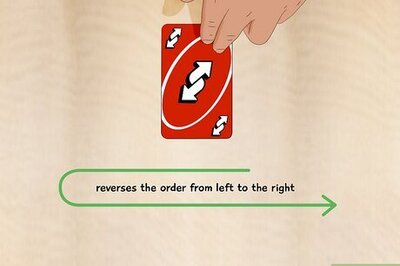





Comments
0 comment